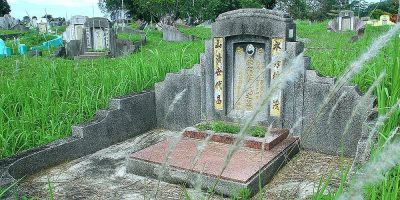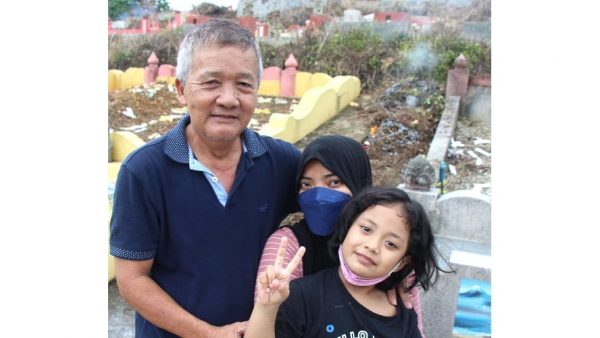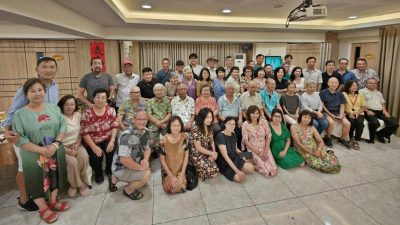Early Chinese cemeteries came into existence as a final resting place for the souls that due to one reason or another were “stranded” overseas.
To the early immigrants from China, the living environment in Malaya was not as these people had imagined.
Looking around, there were thick virgin forests everywhere waiting to be pioneered. But once they settled down somewhere, made enough to lead a decent living and had roofs over their heads, they would start to yearn for things that would satisfy their extended needs such as education and religion. That was how we had schools and temples.
What followed was the inevitable eventuality all mortals had to go through — death — and hence the need for cemeteries.
Before the recent Qing Ming festival, local scholar Pek Wee Chuen who has dedicated much of his life studying the Chinese cemeteries in Malaysia, took us to every corner of the Association of Kwong Tong Cemetery Management Kuala Lumpur to explore this unusual cultural legacy of Chinese Malaysians, giving us a detailed account of the history of local Chinese cemeteries as well as the unique designs of tombstones for different ancestries.
We even walked into the mysterious zone to explore the tombs of several renowned figures concealed from public sight by the thick overgrowth.
At ten thirty in the morning, the Association of Kwong Tong Cemetery Management KL was bathed in glorious sunlight. Pek had earlier warned us to prepare sun-protection gear.
He skillfully put on his bamboo hat, and took us to the Tua Pek Kong shrine to offer our prayers.
We believe Tua Pek Kong is guarding over this cemetery. Whether you believe it or not, at least we should come here and tell Him that we’re now here and hopefully our visit will not cause much trouble to Him.
When we were very young, we used to follow our parents to the cemetery, where there were unattended and overgrown tombs as well as opulent ones, during the annual Qing Ming festival. But most of the time we hardly spent more than an hour there, and would quickly leave after sweeping the tomb and offering our prayers.
We were also instructed by the old people not to stare around.
The history of Chinese cemeteries in Malaysia could be traced back to the time immigrants first arrived here from China early to centuries ago.
Sailing all the way to Southeast Asia braving the hostile seas means people were forced to quit a familiar living environment for one completely unfamiliar. And often during such a transition, the fatality rate could be staggering.
It is said that from the 1870s through 1880s when much of this land was still covered with virgin forests, about 70% of new arrivals from China could die. There were many reasons for this, including mosquito bites and drinking unclean water.
Fast forward to the 21st century, it is hard for any of us to imagine that fatality could be that high back then.
When people were digging for underground water, who would know whether there was corpse water from human or animal remains contaminating the upstream, or cholera from bacterial infection? Our naked eyes could not tell the potability of the water at hand. As a consequence, people living in downstream areas would invariably get sick if they accidentally drank unclean water.
During those years of deprivation, getting the stomach filled could be a major challenge, let alone the adequate intake of vegetables, vitamins and other nutrients.
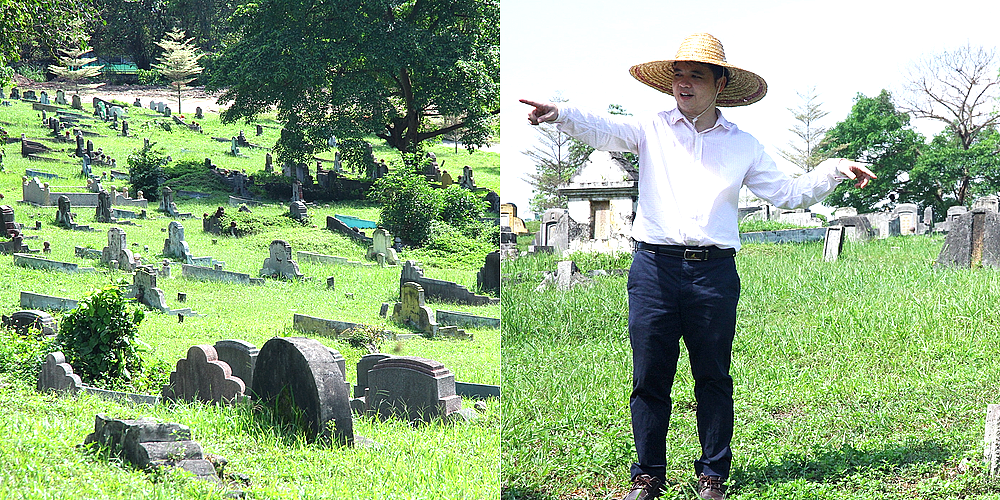
Owing to chronic malnutrition, physically weakened laborers would never be able to fight the illness when they got infected with malaria, etc.
And this suffering did not happen exclusively among the working class.
As a matter of fact, mosquitoes became tiny heroes defeating Japanese troops during the 50-year Japanese occupation of Taiwan, as many soldiers were killed by malaria, so much so that not even Prince Kitashirakawa Yoshihisa who personally headed the offensives on Taiwan was spared.
We can imagine that staying alive could be a challenging task for early Chinese migrants.
Where were the dead migrant workers buried at a time large-scale cemeteries were not yet established?
Well, we all know that every dead person deserves a proper resting place after his or her departure, and we cannot simply dump the body of a dead relative outside the house and let the natural decomposition process take its cause so that wild animals could feed on the dead body. This couldn’t have been an acceptable customary practice of the Chinese people who believe a dead person needs to be buried below ground.
According to Pek, there wasn’t a proper cemetery initially, when people would just look for a place to bury all the bodies collectively. Just like what we would see in a movie, the body was typically wrapped in a mat and buried under the ground.
While the better-off families could afford to have the body cremated and the ash contained inside an urn to be shipped back to China for burial, most people could not afford the exorbitant cost. Those without relatives taking care of their funerals had to be haphazardly buried on suburban wasteland.
As a result, when people started to open up the lands, they discovered that the previously forested terrain was littered with human remains.
Although they were buried under the ground, given the trampling by animals over time, and digging by wild dogs, the soil would become loosened, thus exposing the buried remains.
This also shows that early migrants did not have the practice of using a coffin to contain the dead body but covering it instead with wood, fabric or twigs before burial.
Back then the jobs designated to early Chinese migrant workers were either tin mining or forest clearing, and there wouldn’t be anyone tasked with the responsibility of funeral undertaking, as it wasn’t in the best economic interest of anyone, until the area became economically more affluent later and funeral service came into being.
The most fundamental requirement for a cemetery is the land. When the economy improved, local community leaders commanding more respectable social status would come up raising funds among the residents in order to buy land from the government, making the initially illegal burial ground now a legal site.
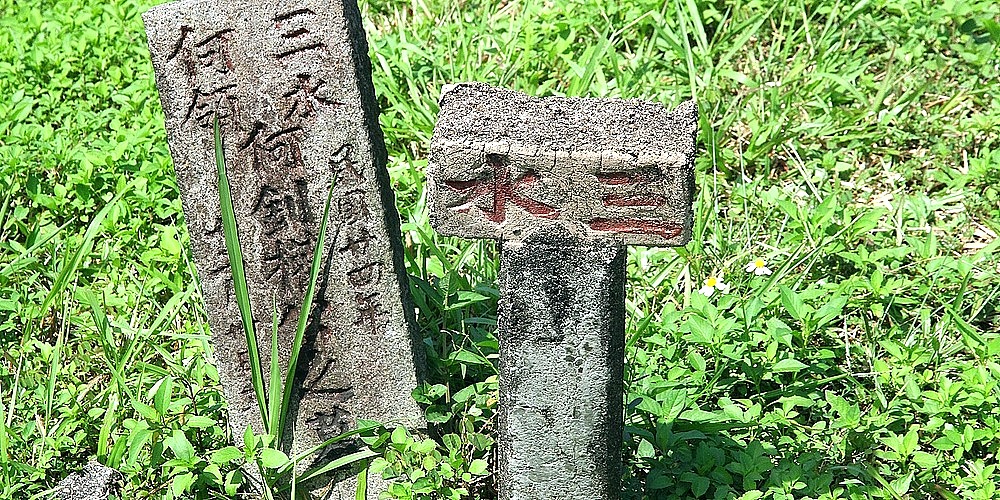
The legality of early cemeteries depended very much on the local colonial governments. For instance, the English came to rule Selangor, Negeri Sembilan, Pahang and Perak around 1874, and this was followed by the introduction of land sale application and land planning laws.
To the local Chinese community, nothing came more important than respectfully handling and burying the remains of their dead parents. Because of that, more organized cemeteries were established, typically through fund raising initiatives by a committee set up among local Chinese associations or temples.
As we walked to the front of the master tomb (zong fen), Pek said the cemeteries slowly entered a more organized phase, as people started to build resting pavilions and exhume the remains from old burial sites for re-burial.
In the past, matters related to Chinese migrant workers were handled by companies like Ghee Hin and Hai San. When a worker died of illness, free burial service would be provided by the company. The so-called “company hills” (kongsi soa) that we see at Chinese cemeteries were generally set up under such circumstances.
As such, during the annual Qing Ming tomb-sweeping festival, we would see some particularly grand tombs along the road, and those are the companies’ master tombs in which not only one or two bodies were buried but the workers of an entire company! Those bodies were not initially buried here but their scattered remains were exhumed from other burial sites and re-buried here.
The word “yi” from the Chinese term for cemetery “yi shan” means a meritorious act, symbolizing the commitment to merit and morality in traditional Chinese mentality. To them, proper burial of the body of a dead ancestor is a meritorious act.
Due to the poor economic conditions at that time, many Chinese migrant workers could not afford to travel back to China and many had to be buried here after they died.
Subsequently, the local dignitaries or clan associations would take up the responsibility of handling their funerals, which was considered an act of merit that would help them “accumulate the merit” in this life while also boosting their social reputation.
Pek said many Chinese migrant workers had hoped that their remains would be sent back to China for burial so that they could be returned to where they were born.
But in reality, things don’t always go as one wishes. Many who were unable to return to their ancestral land would eventually need a final resting place here. And we can conclude that early Chinese cemeteries came into existence as a final resting place for the souls that due to one reason or another were “stranded” overseas.
This is the first of three articles in the series of Chinese cemeteries and the traditional tomb-sweeping festival.
ADVERTISEMENT
ADVERTISEMENT






